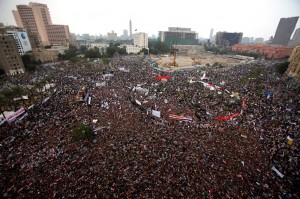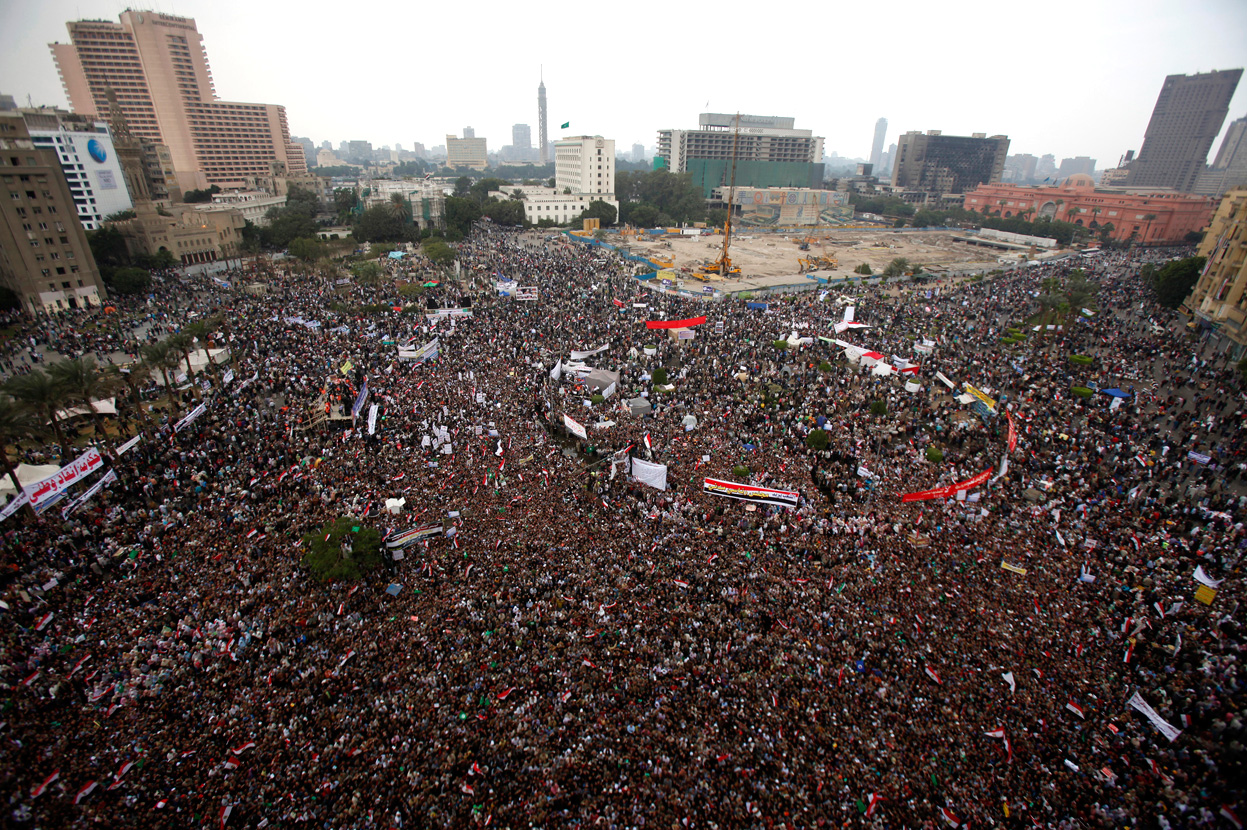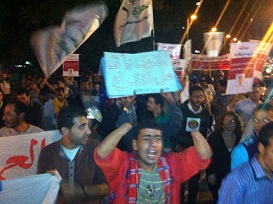
(AFP File Photo of the 25 Jan 2011 protests)
Since the outbreak of the 25 January Revolution that demanded the end of police brutality, the Ministry of Interior played a crucial role in the development of Egypt’s political scene. After 11 February 2011 and the toppling of former President Hosni Mubarak, six interior ministers have occupied one of the most controversial governmental seats in Egypt.
General Mahmoud Wagdy
General Mahmoud Wagdy was appointed in the government of the Mubarak-era Prime Minister Ahmed Shafik, ending the controversial and violent reign of former minster Habib Al-Adly. Wagdy’s appointment was met with heavy criticism from angry protesters in Tahrir Square.
Days after his appointment, the infamous ‘Battle of the Camels’ took place where alleged thugs and pro-Mubarak armed protesters attacked pro-democracy protesters in Tahrir Square. Wagdy was a retired general in the ministry’s powerful prison’s department. His reign as minister was short-lived after he Shafik resigned on 3 March, due to pressure from the opposition.
Wagdy is one of the many police figures who support the narrative that argues that the Muslim Brotherhood mobilised the angry masses to topple regime, and that some revolution icons, like political activist Wael Ghonim, were Muslim Brotherhood members. He also supported the narrative that elements from the Gaza-based movement, Hamas, participated in the storming of police stations and prisons.
General Mansour Al-Essawi
Al-Essawi was a part of Essam Sharaf’s cabinet. At that time, the Supreme Council of the Armed Forces (SCAF) wanted to reinforce security across the country after two bloody months left hundreds dead, missing, and injured. In many interviews, Al-Essawi aimed to “return the confidence of Egyptian policemen”, who feared retaliation attacks by citizens who were still agitated by the killings that happened starting on 28 January 2011.
He was a former deputy minister of security of Cairo and Giza, and has worked in Upper Egypt. Al-Essawi is known to have limited the authorities of the State Security apparatus. Al-Essawi denied accusations that the police forces killed peaceful protestors during the revolution, and added that the ministry does not have snipers.
During his reign, more than 25 Coptic Christians were killed in front of the Mesapero building after the army attacked the protesters. Following the massacre, Sharaf and his government resigned.
General Mohamed Ibrahim Youssef
Following Sharaf’s resignation, one of Mubarak’s most prominent politicians, Kamal Al-Ganzouri, was appointed as prime minister. The Interior Minister’s post was occupied by Mohamed Ibrahim Youssef, whose reign covered both the Mohamed Mahmoud clashes and the Cabinet clashes leaving tens killed from anti-government protesters.
Youssef denied that the police forces used live rounds in dispersing the protests. His reign also witnessed the deadly Port Said Stadium massacre, where over 70 football fans from Al-Ahly Club were killed. After the incident, while sessions of the Brotherhood-dominated parliament were taking place, tens of angry protesters were demonstrating and were reportedly met by birdshots and tear gas.
General Ahmed Gamal El-Deen
Gamal El-Deen was the first interior minister in the cabinet of a democratically elected president. Appointed by Morsi, he aimed to restore security and end criminal activity. His reign witnessed lesser violent confrontations with anti-Morsi protesters. However, police forces participated in the violent clashes which followed the verdict sentencing 21 Port Said-based defendants to death. The clashes resulted in tens of casualties, and the enforcement of a curfew in the governorate of Port Said.
General Mohamed Ibrahim
Appointed by Morsi, Ibrahim’s reign was the most violent and most controversial, where after the toppling of Morsi in July 2013 hundreds of protesters were killed and thousands were arrested, receiving harsh sentences. Morsi supporters argue that the police participated in mobilising for the mass 30 June protests, which called for the toppling of Morsi and early presidential elections.
Critics of the regime hold Ibrahim responsible for many deaths, which the police are accused of, such as the Rabaa Al-Adaweya and Al-Nahda Squares massacres, the killing of protesters in the third and fourth anniversaries of the revolution, and the murder of political activist Shaimaa Al-Sabbagh.


